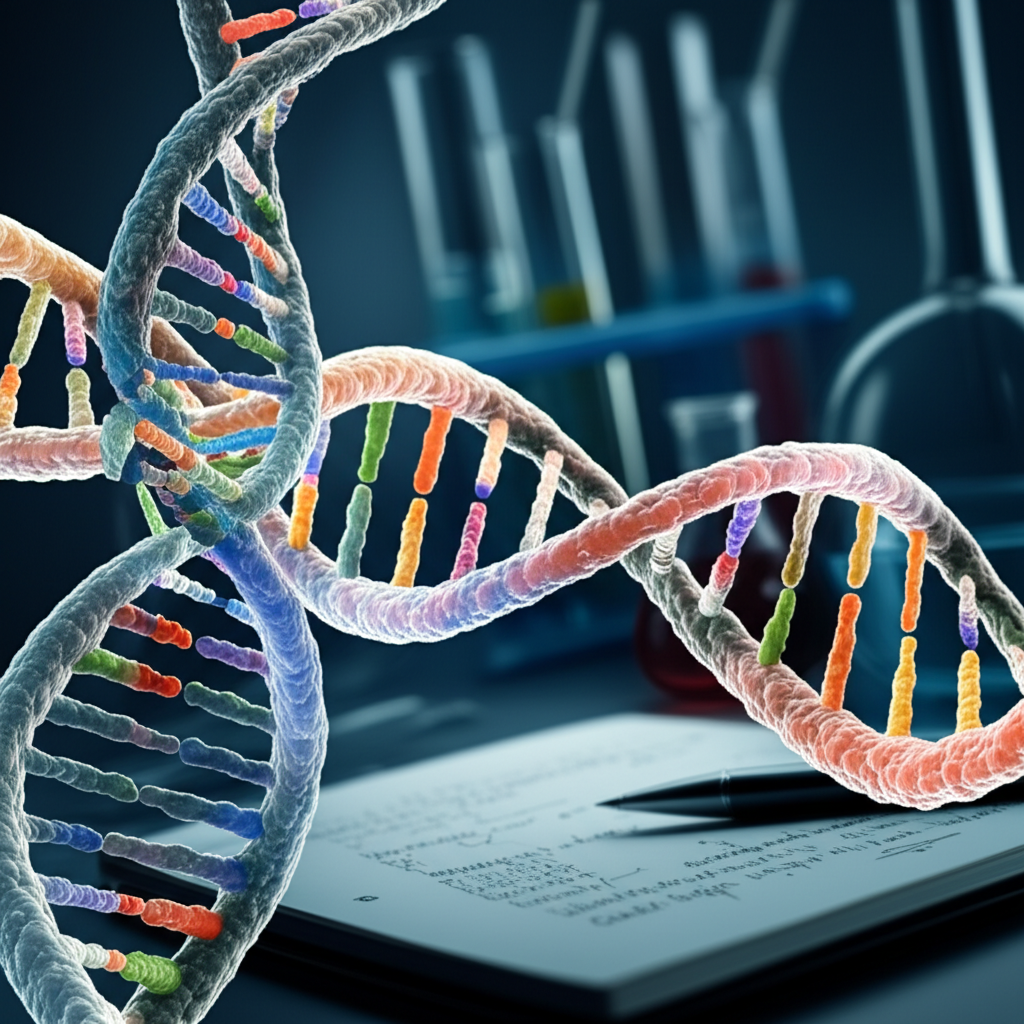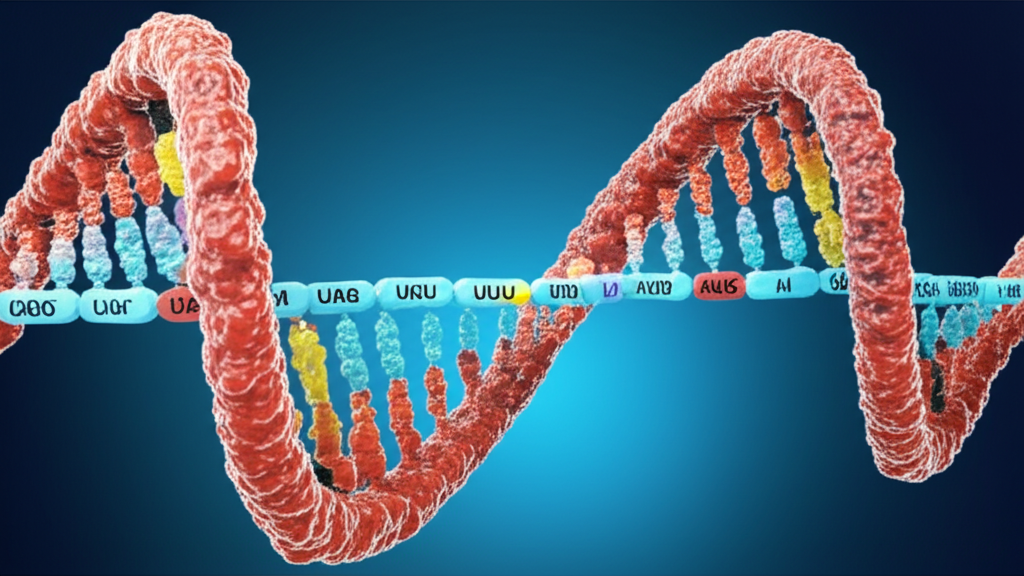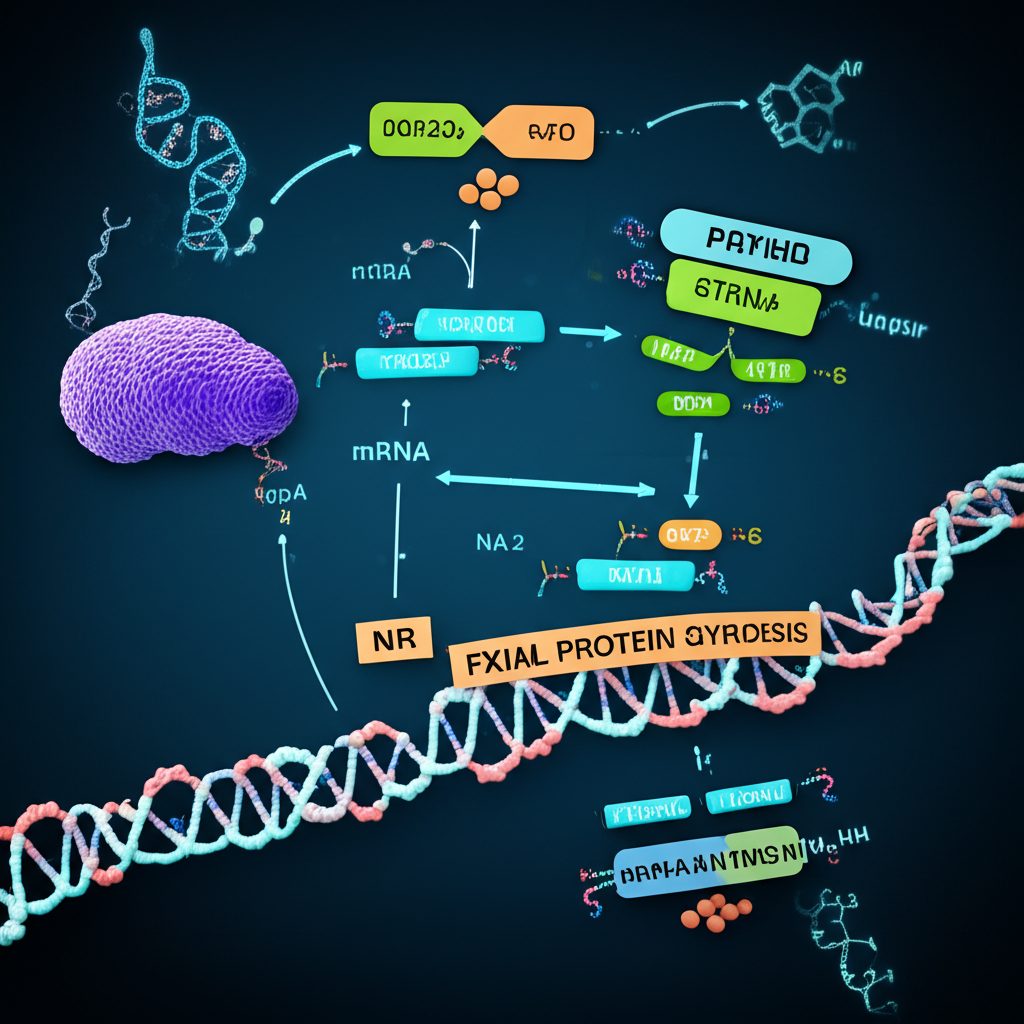
Categories: Genetics, Molecular Biology, Biotechnology
Tags: mRNA, nucleotide sequence, genetic code, transcription, protein synthesis, DNA
Introduction
In the intricate world of molecular biology, the question "What determines the nucleotide sequence in mRNA?" is fundamental to understanding gene expression and protein synthesis. The process begins with DNA, the blueprint of life, which holds the instructions for creating mRNA through a process called transcription. This article will delve into how the nucleotide sequence in mRNA is determined by the sequence of nucleotides in DNA, the role of RNA polymerase, and how this sequence ultimately influences protein synthesis in cells.
The Genetic Code and Nucleotide Sequences
What is mRNA?
Messenger RNA (mRNA) is a single-stranded molecule that carries the genetic instructions from DNA to the ribosome, where proteins are synthesized. The sequence of nucleotides in mRNA directly corresponds to the sequence of amino acids in a protein, following the genetic code.

How is mRNA Synthesized?
The synthesis of mRNA from DNA involves several key steps:
Transcription Initiation: This process starts when RNA polymerase binds to a specific region called the promoter, located at the beginning of a gene on the DNA strand.
Transcription Elongation: RNA polymerase moves along the DNA template strand, synthesizing a complementary strand of mRNA. The nucleotide sequence of the mRNA is determined by the template DNA strand, where adenine (A) pairs with uracil (U) instead of thymine (T), and cytosine (C) pairs with guanine (G).
Transcription Termination: This process concludes when RNA polymerase reaches a termination signal, prompting the release of the newly synthesized mRNA strand.
Determining Factors of mRNA Sequence
The specific sequence of nucleotides in mRNA is determined by:
- The DNA Template: The original DNA sequence directly dictates the mRNA sequence.
- Promoter Regions: The strength and location of promoters can influence the efficiency of transcription.
- Regulatory Elements: Enhancers and silencers can modify the rate of transcription, impacting mRNA levels.
| Step | Description | Outcome |
|---|---|---|
| Initiation | RNA polymerase binds to the promoter | Transcription begins |
| Elongation | RNA polymerase synthesizes mRNA | mRNA strand grows |
| Termination | RNA polymerase reaches a termination signal | mRNA is released |
Expert Insights on mRNA and Protein Synthesis
Dr. Jane Smith, a molecular biologist, explains: "The relationship between DNA and mRNA is not just linear; it is complex and involves several regulatory mechanisms that ensure proper gene expression."
Another expert, Dr. Michael Lee, states: "Understanding how the nucleotide sequence in mRNA is determined is crucial for advancements in genetic engineering and therapeutic interventions."
The Importance of mRNA in Cellular Function
mRNA plays a vital role in cellular processes:
- Protein Synthesis: Each mRNA molecule serves as a template for assembling amino acids into proteins.
- Gene Regulation: The levels of mRNA can determine how much of a given protein is produced, influencing cellular activities.
- Cellular Response: mRNA responds to environmental changes, allowing cells to adapt by altering protein production.

FAQ
1. How does the nucleotide sequence in mRNA affect protein synthesis?
The sequence of nucleotides in mRNA determines the order of amino acids in a protein, which influences the protein's structure and function.
2. What are codons in mRNA?
Codons are sequences of three nucleotides in mRNA that correspond to specific amino acids or stop signals during protein synthesis.
3. Can mRNA sequences vary between individuals?
Yes, variations in mRNA sequences can occur due to genetic mutations, alternative splicing, and environmental factors, affecting protein function and expression.
4. How does transcription affect mRNA stability?
Certain sequences in mRNA can lead to rapid degradation or stability, influencing how long the mRNA remains active within the cell.
5. What role do transcription factors play?
Transcription factors are proteins that bind to specific DNA sequences to regulate the transcription of genes, thus influencing mRNA synthesis.
Conclusion
The determination of the nucleotide sequence in mRNA is a cornerstone of molecular biology, linking the genetic information encoded in DNA to the synthesis of proteins that govern cellular function. By understanding this process, researchers can unlock new avenues in genetics, biotechnology, and therapeutic developments.
Call-to-Action: For those interested in exploring the fascinating world of genetics further, consider using AudioX for your academic and research needs, where advanced AI tools can help you simplify complex biological processes and enhance your learning experience.
Social Media Snippet: Curious about how the nucleotide sequence in mRNA is determined? Discover the science behind transcription and its impact on protein synthesis! #mRNA #Genetics #Biology
Suggested Internal Links:
- "The Role of RNA Polymerase in Transcription"
- "Understanding Codons and Their Importance in Protein Synthesis"
- "Gene Regulation: How mRNA Levels Affect Protein Production"
Suggested External Links:
- National Institutes of Health (NIH) NIH Genetics Home Reference
- Nature Reviews Genetics Nature Reviews
This blog post provides a comprehensive overview of how the nucleotide sequence in mRNA is determined, structured for SEO, and engaging for readers interested in molecular biology and genetics.